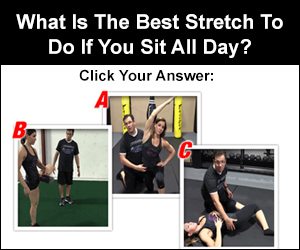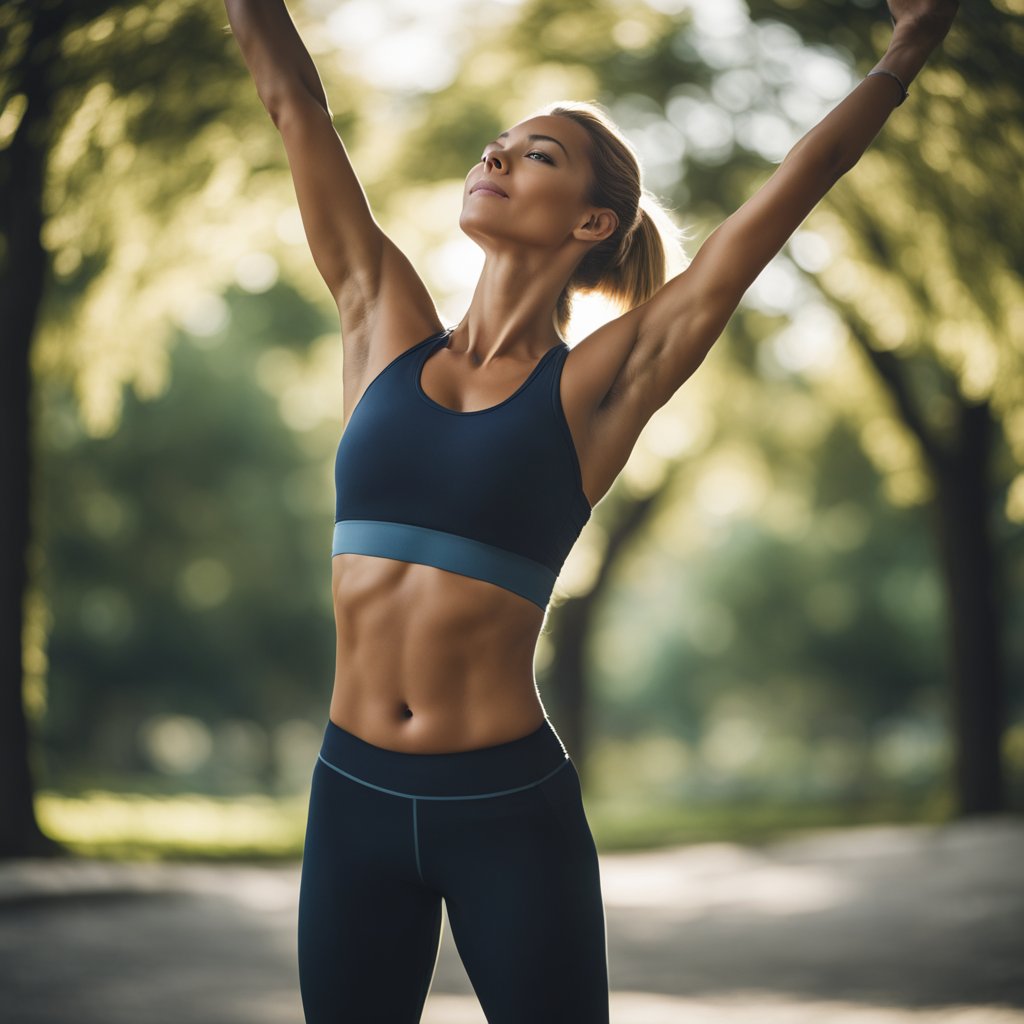Functional fitness has gained popularity in recent years as a practical approach to exercise. This training method focuses on improving everyday movements and activities through targeted workouts. Functional fitness exercises mimic real-life actions, enhancing strength, stability, and flexibility for daily tasks.

Unlike traditional gym routines, functional fitness emphasizes multi-joint movements that engage multiple muscle groups simultaneously. This approach helps develop overall body coordination and balance, making it beneficial for people of all ages and fitness levels.
By incorporating functional fitness into their routines, individuals can improve their quality of life and reduce the risk of injuries during everyday activities. Whether it’s lifting groceries, climbing stairs, or playing with children, functional fitness prepares the body for real-world challenges.
Key Takeaways
- Functional fitness improves everyday movements through targeted exercises
- Multi-joint movements enhance overall body coordination and balance
- Regular practice can reduce injury risk and improve quality of life
Fundamentals of Functional Fitness
Functional fitness focuses on training the body for real-world activities. It emphasizes natural movements and practical strength to improve overall health and daily functioning.
Key Concepts and Definitions
Functional fitness trains the body to perform everyday tasks more efficiently. It incorporates multi-joint movements that work several muscle groups simultaneously.
Core exercises form the foundation of functional training. These target the abdomen, lower back, and hips to improve stability and balance.
Compound movements like squats, lunges, and push-ups mimic daily activities. They enhance strength, flexibility, and coordination in ways that translate to real-life situations.
Functional training often uses bodyweight exercises and free weights. These tools allow for more natural movement patterns compared to machine-based workouts.
Importance of Movement Patterns
Functional fitness prioritizes seven fundamental movement patterns: squat, lunge, push, pull, hinge, rotate, and gait.
These patterns form the basis of most daily activities. Squatting mimics sitting and standing, while pushing reflects actions like opening doors.
Training these patterns improves body awareness and motor control. It helps prevent injuries by teaching proper form for common movements.
Incorporating varied movement patterns ensures balanced muscular development. This approach reduces the risk of overuse injuries and muscular imbalances.
Benefits for Everyday Life
Functional fitness enhances performance in daily tasks. It can make activities like carrying groceries or climbing stairs easier and less tiring.
Improved balance and coordination reduce the risk of falls, especially in older adults. This benefit contributes to maintaining independence in later years.
The focus on core strength supports better posture. Good posture can alleviate back pain and improve overall comfort throughout the day.
Functional training boosts energy levels and stamina. This increased endurance allows for greater participation in leisure activities and hobbies.
By mimicking real-life movements, functional fitness prepares the body for unexpected physical challenges. This adaptability can prevent injuries in various situations.
Developing Core Components
Functional fitness focuses on building key physical attributes that support everyday activities and overall wellness. Targeted training in specific areas enhances performance and reduces injury risk.
Building Muscle Strength and Stability
Muscle strength forms the foundation of functional fitness. Compound exercises like squats, deadlifts, and push-ups engage multiple muscle groups simultaneously, mimicking real-world movements.
Resistance training with free weights or bodyweight exercises builds lean muscle mass and improves joint stability. Start with 2-3 sets of 8-12 repetitions per exercise, gradually increasing weight and volume.
Core exercises like planks and Russian twists strengthen the abdominal and lower back muscles. A strong core enhances posture, reduces back pain, and improves overall stability during daily tasks.
Enhancing Flexibility and Mobility
Flexibility allows for a greater range of motion in joints and muscles. Regular stretching improves posture, reduces muscle tension, and decreases injury risk.
Static stretches, held for 15-30 seconds, target specific muscle groups. Dynamic stretches like leg swings and arm circles prepare the body for activity by increasing blood flow and warming up muscles.
Yoga and Pilates incorporate stretching and controlled movements to enhance flexibility and body awareness. Practice these disciplines 2-3 times per week for optimal results.
Improving Balance and Coordination
Balance training enhances proprioception – the body’s ability to sense its position in space. This skill is crucial for preventing falls and maintaining stability during daily activities.
Single-leg exercises like standing on one foot or performing single-leg deadlifts challenge balance. Progress by closing your eyes or using unstable surfaces like balance boards.
Coordination drills such as ladder exercises or ball toss routines improve neuromuscular connections. These activities enhance reaction time and spatial awareness, benefiting both athletes and older adults.
Designing a Functional Fitness Program
A well-designed functional fitness program focuses on exercises that mimic real-life movements. It incorporates compound exercises, progressive overload, and varied workout structures to enhance overall physical performance and daily functionality.
Selection of Exercises
Functional fitness exercises should target multiple muscle groups and replicate everyday movements. Key exercises include squats, lunges, deadlifts, push-ups, and rows. These movements improve strength, flexibility, and balance simultaneously.
Bodyweight exercises like burpees and mountain climbers are excellent for developing cardiovascular endurance. Kettlebell swings and medicine ball throws enhance power and explosiveness.
Including exercises that challenge stability, such as single-leg deadlifts or planks, helps improve balance and core strength. This variety ensures a well-rounded approach to functional fitness.
Incorporating Compound Movements
Compound movements are essential in functional fitness programs. These exercises engage multiple muscle groups and joints, mimicking real-world activities.
Examples include:
- Squat to overhead press
- Deadlift to row
- Lunge with bicep curl
These movements improve coordination, burn more calories, and save time by working several muscle groups simultaneously. They also enhance overall body awareness and proprioception.
Compound exercises can be performed with bodyweight, free weights, or resistance bands, making them versatile for different fitness levels and equipment availability.
Exercise Progression and Variation
Progression is key to continuous improvement in functional fitness. Start with basic movements and gradually increase complexity, resistance, or volume.
For example:
- Bodyweight squat
- Goblet squat
- Barbell back squat
Vary exercises regularly to prevent plateaus and maintain motivation. This can include changing grip positions, altering tempo, or using different equipment.
Periodization, which involves cycling through different training phases, helps optimize progress and prevent overtraining. Phases may focus on strength, endurance, or power, depending on individual goals.
Sets, Reps, and Workout Structure
The optimal sets, reps, and workout structure depend on individual goals and fitness levels. A general guideline for beginners:
- 2-3 sets per exercise
- 8-12 reps for strength and muscle building
- 12-20 reps for endurance
Circuit training is effective for functional fitness, combining strength and cardio elements. A typical circuit might include:
- Squat jumps (30 seconds)
- Push-ups (30 seconds)
- Kettlebell swings (30 seconds)
- Mountain climbers (30 seconds)
Rest 15-30 seconds between exercises and 1-2 minutes between circuits. Perform 3-5 rounds for a complete workout.
High-Intensity Interval Training (HIIT) can be incorporated for efficient calorie burning and improved cardiovascular fitness. Alternate 30 seconds of intense exercise with 30 seconds of rest.
Functional Fitness Exercise Examples
Functional fitness exercises mimic everyday movements and engage multiple muscle groups simultaneously. These exercises improve strength, stability, and mobility for real-world activities.
Lower Body Focus
Squats are a cornerstone of functional fitness, targeting the quadriceps, hamstrings, and glutes. They simulate sitting down and standing up, a movement performed countless times daily. Proper form involves keeping the chest up and knees aligned with toes.
Lunges, both forward and reverse, enhance leg strength and balance. They mimic walking and climbing stairs. The lateral lunge adds a side-to-side component, improving hip mobility and inner thigh strength.
Deadlifts strengthen the posterior chain, including the lower back, glutes, and hamstrings. This exercise replicates picking objects off the ground, a common daily task.
Upper Body and Core Engagement
Push-ups are versatile and effective for building upper body strength. They work the chest, shoulders, triceps, and core muscles. Modifications can make them suitable for all fitness levels.
Pull-ups target the back, biceps, and core. While challenging, they greatly improve upper body strength and posture. Assisted variations can help beginners progress.
Planks are excellent for core stability. They engage multiple muscle groups, including the abs, obliques, and lower back. Proper form is crucial for maximum benefit and injury prevention.
Full-body and Multijoint Exercises
The overhead press strengthens shoulders, triceps, and upper chest while engaging the core for stability. It mimics reaching and lifting objects above head height.
Goblet squats combine lower body and core work. Holding a weight at chest level challenges balance and engages more muscle groups than a standard squat.
Kettlebell swings are dynamic exercises that target the hips, glutes, and back. They improve power and cardiovascular endurance simultaneously.
Walking lunges add a dynamic element to the standard lunge. They enhance coordination and simulate real-world movement patterns more closely.
Adapting Functional Fitness for Different Goals

Functional fitness can be tailored to meet various objectives, from enhancing athletic performance to preventing injuries and supporting senior health. The versatility of functional training allows for customized approaches that address specific needs and goals.
Functional Fitness for Athletes
Athletes benefit from functional fitness by improving sport-specific movements and overall performance. Exercises mimic real-world motions, enhancing strength, power, and agility relevant to their sport.
Plyometric exercises like box jumps and medicine ball throws develop explosive power. Compound movements such as squats and deadlifts build functional strength. Rotational exercises improve core stability and rotational power.
Balance and proprioception drills enhance body awareness and reduce injury risk. Sport-specific drills integrate functional movements with skill practice, refining technique under fatigue.
Functional Training for Injury Prevention
Functional training plays a crucial role in injury prevention by addressing muscle imbalances and improving joint stability. It focuses on strengthening the body as an integrated unit.
Core strengthening exercises like planks and bird dogs enhance spinal stability. Single-leg exercises improve balance and strengthen stabilizing muscles around joints.
Resistance band exercises target smaller muscle groups often neglected in traditional weightlifting. Mobility drills increase flexibility and range of motion, reducing strain on joints.
Proper form and technique are emphasized to prevent overuse injuries. Gradual progression in intensity and complexity ensures safe adaptation.
Tailoring Workouts for Seniors
Functional fitness for seniors focuses on maintaining independence and quality of life. Exercises are designed to improve daily activities and reduce fall risk.
Chair exercises like seated leg lifts and arm curls build strength safely. Walking programs combined with balance exercises enhance cardiovascular health and stability.
Resistance training with light weights or bodyweight exercises helps maintain muscle mass and bone density. Stretching routines improve flexibility and reduce stiffness.
Tai chi and yoga-inspired movements improve balance and body awareness. Social group classes provide motivation and cognitive stimulation alongside physical benefits.
Implementing Functional Fitness into Your Lifestyle
Incorporating functional fitness into daily routines can yield significant benefits. Start by identifying natural movements performed regularly, such as pushing, pulling, climbing, and reaching. These actions form the foundation of functional exercises.
Begin with simple bodyweight exercises that mimic everyday activities. Squats replicate sitting and standing, while lunges simulate climbing stairs. Push-ups mirror the motion of pushing open heavy doors.
Add resistance gradually using household items. Carry groceries for an extended period to build strength and endurance. Use a backpack filled with books for weighted squats or lunges.
Integrate functional movements into chores. While gardening, practice proper lifting techniques. When cleaning, incorporate lunges or squats while picking up items from the floor.
Create a balanced routine targeting all major muscle groups. Include exercises for the upper body, lower body, and core. Aim for 2-3 functional fitness sessions per week, lasting 20-30 minutes each.
Consider joining a functional fitness class or working with a certified trainer to learn proper form and technique. This ensures safety and maximizes the benefits of each exercise.
Remember to listen to your body and progress at a comfortable pace. Consistency is key in reaping the long-term benefits of functional fitness.

